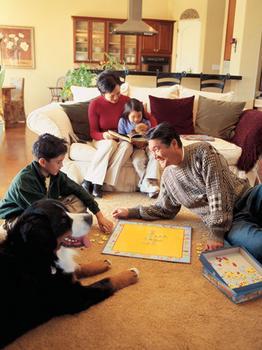Five Tips For More Bonding Time With Your Stepkids
You know the key to building a relationship and bonding with your stepchildren is to spend quality time with them. After a long day of work, it’s tempting to switch on the TV to give yourself a break.
Sometimes watching something you and the kids both like is a good way to connect with and learn more about your stepchildren. Still, there are downsides to watching too much television.
According to the Mayo Clinic, logging too much time in front of the TV statistically increases kids’ chances for weight problems, troubled academic performance, irregular sleep and even bullying.
Decreasing screen time for your kids and teens can help you with bonding, building lasting relationships and put the young people you care for on the road to success.
1. Get Rid of Extra TV Sets
If the kids have televisions in their bedrooms, it’s time to ditch them. According to a study in Pediatrics, teens with television sets in their bedrooms report:
- heavier TV use,
- less time spent on physical activity,
- poorer dietary habits and school performance, and
- fewer family meals together
than teens without an in-bedroom TV set.
2. TV Off at Mealtimes
Especially in stepfamilies or blended families, getting together around a dinner table can provide much-needed structure and connection.
Family & Relationship Services reports, respect rather than love is the basis for new stepfamily relationships.
Love comes over time – it’s not something that can be forced right away. Lay a foundation of respect by interacting at mealtimes and modeling respectful behavior for your children.
Ask about things they care about, listen to their responses and treat them as you would like to be treated.
3. Play Games
As with regular mealtimes at the dinner table, a weekly game night can help a blended family become a cohesive unit. Go shopping together and pick games the entire family can enjoy.
If the kids’ ages vary widely, pick games for the younger kids and separate games for the older kids. Ask the older ones to get involved in the young children’s games, then switch to more teen-appropriate games after the young ones go to bed.
4. Make Your TV Time Count
Compare providers to make sure you’re getting the shows you want, without fluff you don’t want. Consult with the kids to choose shows you will all enjoy, and then plan ahead to minimize friction over who watches what and when.
Opt for high-quality programming that models positive behaviors or teaches school skills. Know and use the ratings system designed for TV programming utilized by most major outlets to choose programming that’s age appropriate – and when possible, watch TV with the kids.
5. Find Alternative Distractions
Every parent needs down time. If you’re still settling into a new married relationship and there are children involved, you will want couple time alone. Learn what each child enjoys and teach them to engage themselves without television sets or computer games.
A young child might like drawing or looking at picture books alone. Older kids may enjoy reading, talking on the phone or playing outside.
Board games the kids enjoy together (that don’t need adult help) are another sound alternative. Implement family “down time” where the kids know parents are off limits (excepting emergencies) for 30 minutes or an hour a couple of nights a week.
To give all your family members a solid foundation for a successful life, start with cutting back to the American Pediatric Association’s recommendations for no more than 1 or 2 hours of screen time per day. Give yourselves time to connect with one another outside of TV time.









